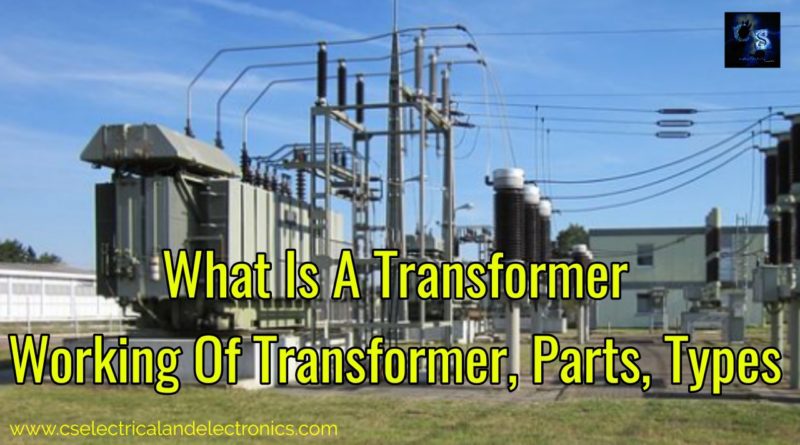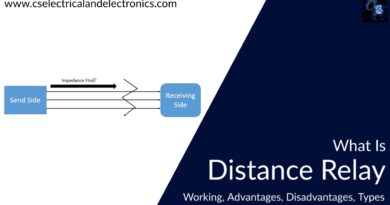What Is A Transformer, Working Of Transformer, Parts, Types
Hello Guys, welcome back to my blog. In this article, I will discuss what is a transformer, working of the transformer, parts of the transformer, types of transformer, etc.
If you want an article on some other topics then comment below in the comment section. You can also catch me @ Instagram – Chetan Shidling.
Also, read – Future Scope Of Battery Management Engineer.
Topics To Be Covered Are:
- 01. what is a transformer?
- 02. Working of the transformer?
- 03. What happens if we connect DC supply to the transformer?
- 04. Parts of the transformer?
- 05. What is the insulating material used in the transformer?
- 06. Properties of oil and function of oil in the?
First, I will discuss the applications of the transformer. Nowadays, transformers are used in every sector it may be schools, hospitals, colleges, in electronics devices, stations, etc, the transformer will give us the desired voltage as per our requirement, if we want an output of 12V then 12V transformers are also available in the market. Transformers are like a heart in a power system.
What Is A Transformer
A transformer is a device or equipment which is in a static position with no moving parts, the purpose of a transformer is to transform voltage from one level to another level without changing frequency and power. If we use a step-down transformer then the transformer will step down the voltage i.e., reduces the voltage. There are many different types of transformer are used nowadays like power transformer, distribution transformer, instrument transformer, etc.
Working Of A Transformer

The transformer always works on the bases or principle of mutual induction. Mutual induction says that when two coils(single-phase transformer) are coupled inductively then the current in one coil if it is changed uniformly then the emf (electromotive force) induce in another coil.
Let’s talk about a single-phase transformer, the transformer mainly consists of two coils or two winding, the winding which is connected to the supply to draw energy is called primary winding whereas the winding which is connected to load is called secondary winding.
When alternating supply is given to the transformer, the alternating flux will be produced in the transformer, this alternating flux completes its path through the magnetic core and then alternating flux links with the secondary winding of the transformer. According to Faraday’s law, whenever coil links with the conductor or vice-versa, the emf will be induced.
This is how the transformer works.
Will Transformer Works On DC Supply
No, the transformer will not work on dc supply because the transformer needs alternating flux but when we connect dc supply it will produce steady flux. So there is a chance of burning a transformer when we connect the dc supply to it.
Parts Of A Transformer
The main parts of the transformer are:
- 01. Core
- 02. Limb
- 03. Yoke
- 04. Windings
- 05. Conservator
- 06. Breather
- 07. Explosion Vent
- 08. Buchholz Relay
Now I will explain step by step each part working.
01. Core – The function of the core is to carry flux produced by the winding. The core is made up of high-grade silicon steel laminations.
02. Limb – The function of the limb is to carry windings or coil. The vertical position of core in the transformer is called a limb.
03. Yoke – The horizontal position of the core is called a yoke. The function of a yoke is to carry flux produced by one winding to another winding.
04. Windings – The function of the winding is to carry current and to produce flux. The coil which is used on a limb is properly insulated from each other.
05. Conservator – During operation of the transformer sometimes heat will be produced inside the transformer which increases the temperature inside of the transformer, the function of a conservator is to take the expansion of oil without allowing it to come in contact with ambient air.
06. Breather – While the transformer taking air inside or leaving out the breather will extract the moisture which is present in the air. When air is taken in before that breather extract moisture from the air, the breather does not allow transformer oil to come in contact with moisture.
07. Explosion Vent – The vent is fixed on the main tank when the pressure inside the tank increases then the pressure will come out through vent and thus protect the transformer.
08. Buchholz Relay – The Buchholz relay is the protective device in a transformer when the fault is developed and gases are released in the transformer, Buchholz relay operates based on these gases and initiates the operation of the circuit breaker.
Insulating Material Used In A Transformer
- 01. Glass tape, cotton or paper are materials used to cover conductors.
- 02. Varnished cloth or bakelite paper cylinders are material used to insulate low voltage winding from the core and also between windings.
- 03. For the oil-immersed transformer, oil acts as insulating material.
Properties Of Transformer Oil
- 01. High dielectric strength
- 02. High thermal conductivity
- 03. Low viscosity
- 04. High resistivity
- 05. Low specific gravity
- 06. Low power factor
Function Of Transformer Oil
- 01. The oil transfers heat produced to the surroundings and keep the transformer cool
- 02. It also acts as an insulating medium
So, guys, this is some detail information about the transformer. If you have any suggestion then comment us in below comment section.
Tags: What Is A Transformer, Working, Parts, Types.
Also, read:
- 10 Tips To Maintain Battery For Long Life, Battery Maintainance
- 10 Tips To Save Electricity Bills, Save Money By Saving Electricity
- 100 (AI) Artificial Intelligence Applications In The Automotive Industry
- 100 + Electrical Engineering Projects For Students, Engineers
- 1000+ Control System Quiz, Top MCQ On Control System
- 1000+ Electrical Machines Quiz, Top MCQs On Electrical Machines
- 1000+ MATLAB Simulink Projects For MTech, Engineering Students
- 50 Tips To Save Electricity At Home, Shop, Industry, Office
- 50+ Question And Answer On The Substation, Electrical Question
- 500+ Matlab Simulink Projects Ideas For Engineers, MTech, Diploma
- 500+ Projects For Diploma Electrical, Electronics Student, Diploma Project
- Active Cell Balancing Using A Flyback Converter Simulation In Matlab Simulink
- AI Artificial Intelligence Applications In Electric Vehicles | Future?
- AI Tools For Electronic Circuit Design, Which Is Best?
- Applications Of Artificial Intelligence (AI) In Renewable Energy
- Automotive Industry Or VLSI Chip Industry ? Which Is Best?
- Basic Electrical Engineering, Terms, Definitions, SI Unit, Formula
- Basic Electrical Quiz, Take Online Test On Basic Electrical, Electrical Quiz
- Battery C Rate Online Calculator With Time Calculation
- Battery Management Systems In Electric Vehicles, BMS Operations
Author Profile
- Chetu
- Interest's ~ Engineering | Entrepreneurship | Politics | History | Travelling | Content Writing | Technology | Cooking
Latest entries
 All PostsApril 19, 2024What Is Vector CANoe Tool, Why It Is Used In The Automotive Industry
All PostsApril 19, 2024What Is Vector CANoe Tool, Why It Is Used In The Automotive Industry All PostsApril 13, 2024What Is TCM, Transmission Control Module, Working, Purpose,
All PostsApril 13, 2024What Is TCM, Transmission Control Module, Working, Purpose, All PostsApril 12, 2024Top 100 HiL hardware in loop Interview Questions With Answers For Engineers
All PostsApril 12, 2024Top 100 HiL hardware in loop Interview Questions With Answers For Engineers All PostsMarch 22, 2024Driver Monitoring Systems In Vehicles, Working, Driver Sleepy Alert
All PostsMarch 22, 2024Driver Monitoring Systems In Vehicles, Working, Driver Sleepy Alert








